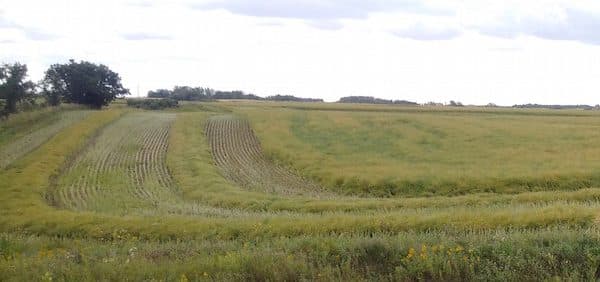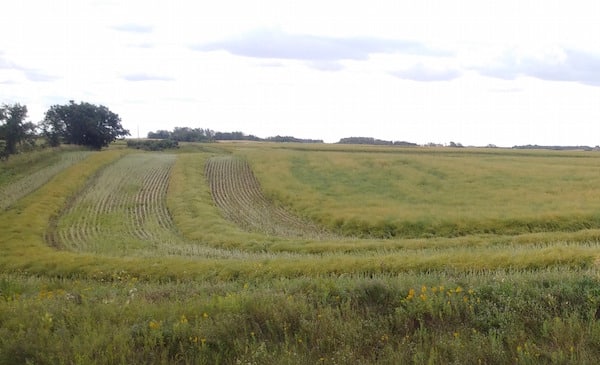Still wondering when to swath uneven crops? If earliest plants in a field show obvious signs of maturity, with lots of seed colour change on the main stem, then cut the first two rounds.
Two full rounds give a good impression of the state of the whole field. And the cleared space makes it much easier to quickly check a number of plants in a few areas — including the back of the field — for seed colour change. The challenge is to stop once swathing has started. Stopping may be the best financial decision for the field, despite the natural drive to keep rolling.
To decide whether to keep going or wait a few days, consider the following:
1. Is most of the field at an average of 60% seed colour change on the main stem? Compare plants within a given area and compare hilltops versus sideslopes and low areas. If most of the main stems are ready, keep swathing unless…
2. The plant population is low. In that case, the main stem may not be a good indicator. If seeds in pods on side branches are still mushy, they will shrivel up and be blown out the back of the combine. If more than 25% of seeds don’t roll on fingers, swathing the crop now is likely to sacrifice this percentage of seeds. Shattering loss from the earliest pods is not a given, but losing these immature seeds out the back of the combine is a given. Hold off swathing this field, unless…
3. Seeds on side branches are not worth waiting for. If side stem pods and seeds are larger and more numerous, they will contribute a large percentage of the yield. However, if these pods are small and very late, consider the frost risk and use that to decide whether these seeds are worth waiting for.
4. A final consideration is harvest logistics. If growers have three weeks worth of swathing to do, some fields may need to be swathed on the early side. Even then, try to avoid going before 30% seed colour change on the main stem, and make sure most seeds on side branches are firm to roll. Mushy immature seeds will be lost.
Further reading:


